Chicken Tempura is a regional favorite in Oita Prefecture of Kyushu region in Japan. With a crispy and fluffy batter on the outside and juicy and tender meat inside, this Chicken Tempura is best enjoyed by dipping with citrusy ponzu sauce.
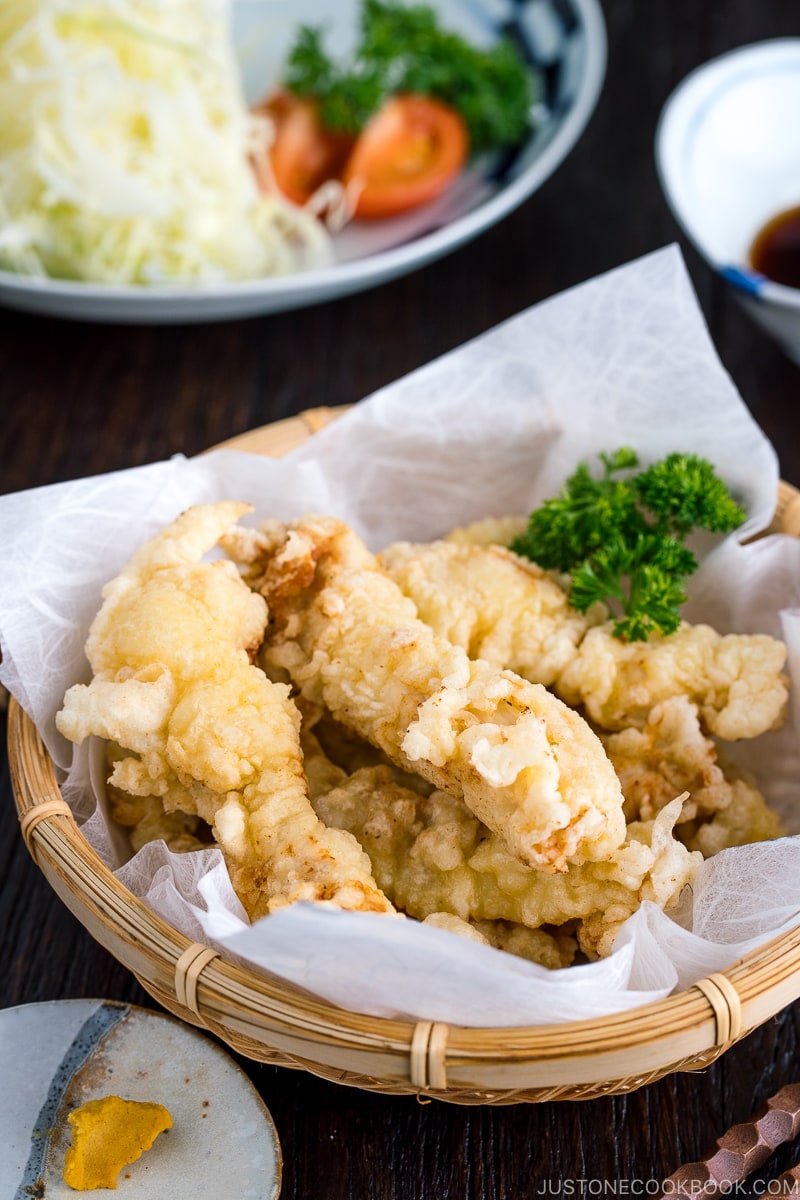
Last summer our family took a week-long trip to Hiroshima and Kyushu. As soon as our train arrived at the station in Beppu, Oita, I had one food in mind that I wanted to try and that was Chicken Tempura called Toriten (とり天) – Oita’s specialty food!
Table of contents
What is Chicken Tempura?
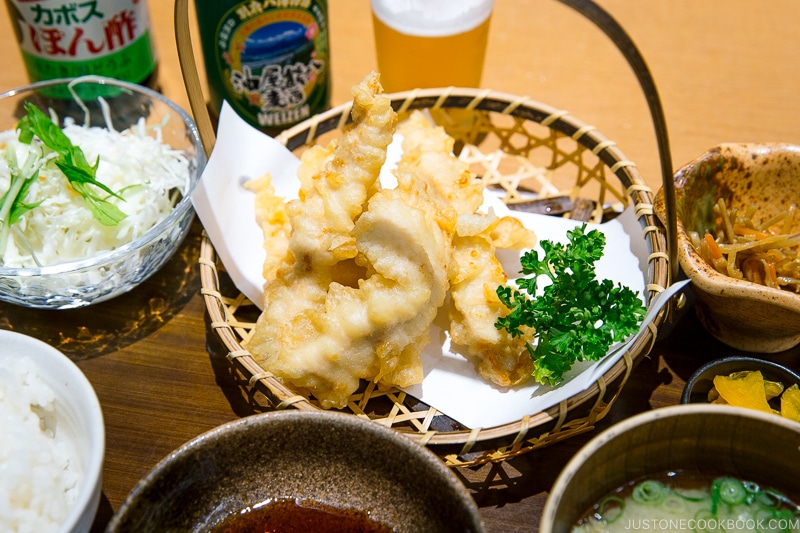
If you never heard of “chicken tempura” before, you’re not alone. I even thought chicken tempura is a westernized version of tempura.
I lived in Japan for 20 years before coming to the United States, and I go back to Japan to visit my family almost every year. However, I had never tried chicken tempura or even seen it on the menu anywhere until my trip to Oita.
Invented by a restaurant in Oita prefecture, Chicken Tempura, or Toriten (とり天) in Japanese, is a popular food mostly enjoyed in this region.
As straightforward as the name implies, chicken tempura is tempura-style fried chicken. Chicken breast or thigh is cut into strips, marinated in soy sauce, garlic, and ginger mixture, coated in tempura batter, and deep-fried.
The main difference between chicken tempura and regular tempura is the dipping sauce. While regular tempura is commonly served with this dipping sauce made with dashi and soy, chicken tempura is often dipped in kabosu ponzu sauce with Japanese karashi hot mustard.
How to Make Chicken Tempura
Ingredients You’ll Need
To marinade the chicken:
- Boneless, skinless chicken breast. I usually prefer chicken thigh when it comes to fried chicken, but leaner meat works best for chicken tempura. That’s what they use in Oita as well. The meat stays moist, juicy, and tender because it is well coated with tempura batter. You can also use chicken tenders.
- Freshly ground black pepper and salt
- Sake (Japanese rice wine)
- Soy sauce
- Grated ginger and garlic – for a touch of aroma
For the tempura batter:
- Egg
- Cake flour (Why? Read the next section)
- Potato starch or cornstarch
- Cold water
- Oil for deep frying
3 Easy Tips to Make Crispy yet Fluffy Chicken Tempura
Here’s my guide on deep-frying technique, which is essential for making Japanese fried food. Beyond that, here are a few more things you can do to improve your tempura.
1. Use cake flour and mix with potato starch
You can use regular all purpose flour, but cake flour has less gluten which helps to make the batter crisp. By mixing it with potato starch, you’ll create a batter that helps keep tempura crisp and retains the shape for a longer time. You can sub potato starch with cornstarch.
2. Don’t overmix the batter
Always mix your tempura batter using chopsticks for only a few seconds and not more than 1 minute, leaving lumps in the mixture. Over-mixing the batter will result in the activation of wheat gluten, which causes the flour mixture to become chewy and dough-like when fried.
3. Keep the batter chilled
A cold batter is a must to achieve the unique fluffy and crisp tempura texture. Since gluten will be activated more at a warmer temperature, we want to avoid that. To keep the batter cool before frying, you can either chill all the ingredients (water, egg, and dry ingredients) or place a bowl in the ice water.
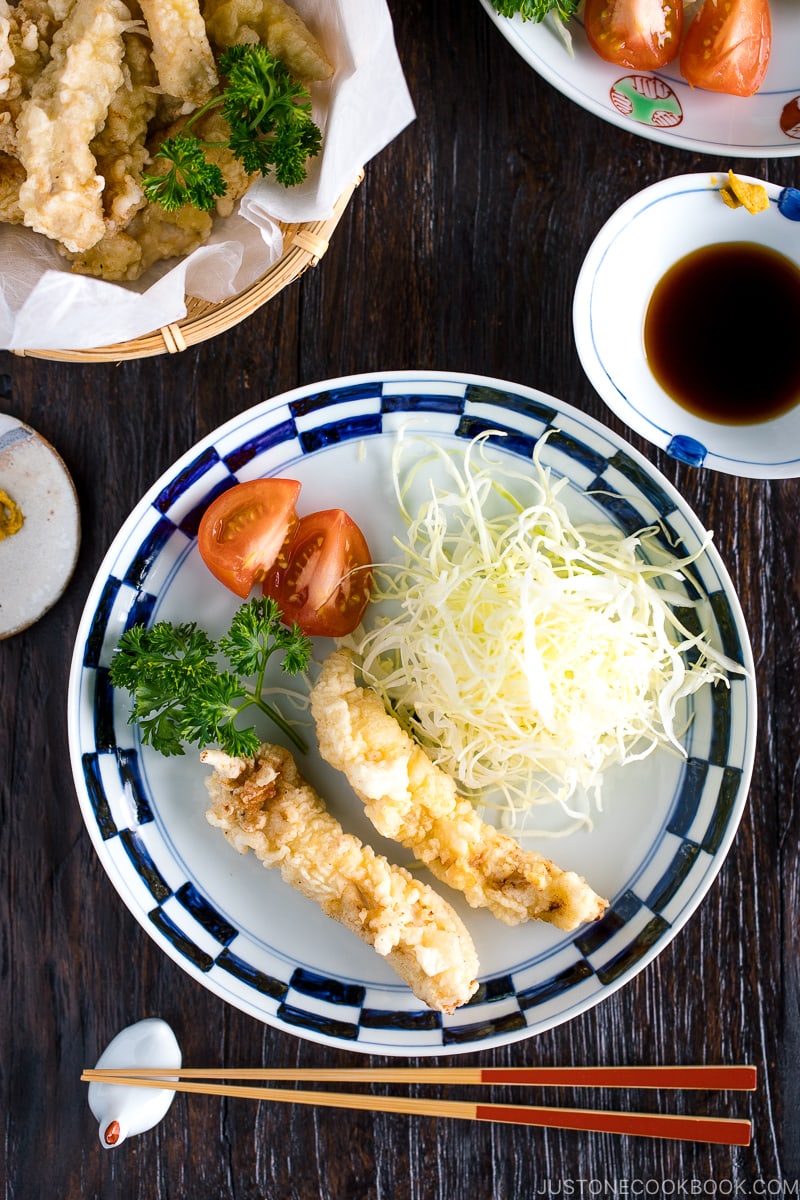
What to Serve with Chicken Tempura
We often serve tempura with steamed rice and miso soup. On the tempura plate itself, there should be a mound of shredded cabbage and tomato wedges by the side. Just like all Japanese fried food, shredded cabbage is the typical side as it helps refresh the palate and cut the grease of the dishes.
To make very fine and fluffy shredded cabbage, I highly recommend this cabbage slicer! We eat shredded cabbage with dressings such as Sesame Dressing, Wafu Dressing, etc.
No cabbage on hand? You can also serve the dressing with a simple salad like spring mix or romaine with tomatoes.
Dipping Sauces
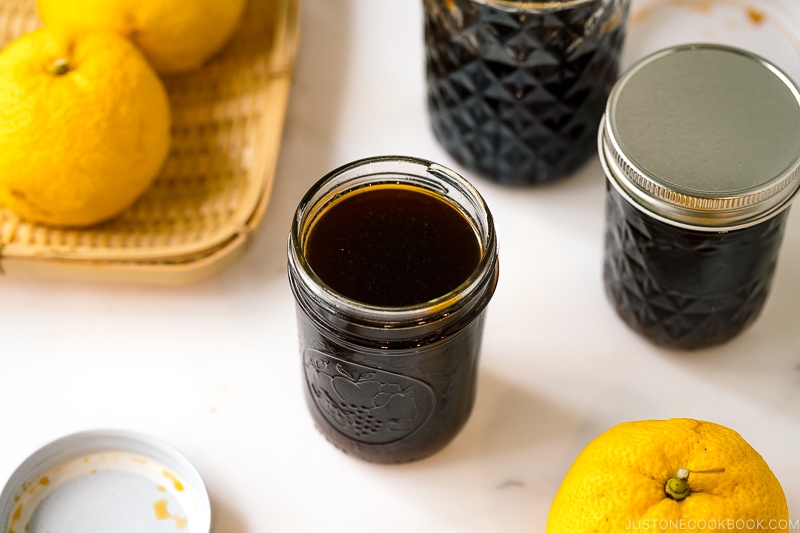
Now the dipping sauces! Chicken tempura is commonly enjoyed with ponzu sauce with a dab of karashi mustard instead of tempura dipping sauce. The citrus soy sauce cuts off the greasy taste and imparts a refreshing note to the deep-fried food.
If you visit the Kyushu region, look out for kabosu ponzu (the bottle shown in the 2nd picture above). Kabosu (カボス), a type of Japanese citrus, is really hard to find outside of Japan.
You can find bottled ponzu at Japanese/Asian grocery stores or online stores. Alternatively, try my homemade ponzu sauce (so delicious, highly recommended!) or simply mix soy sauce with lemon juice.
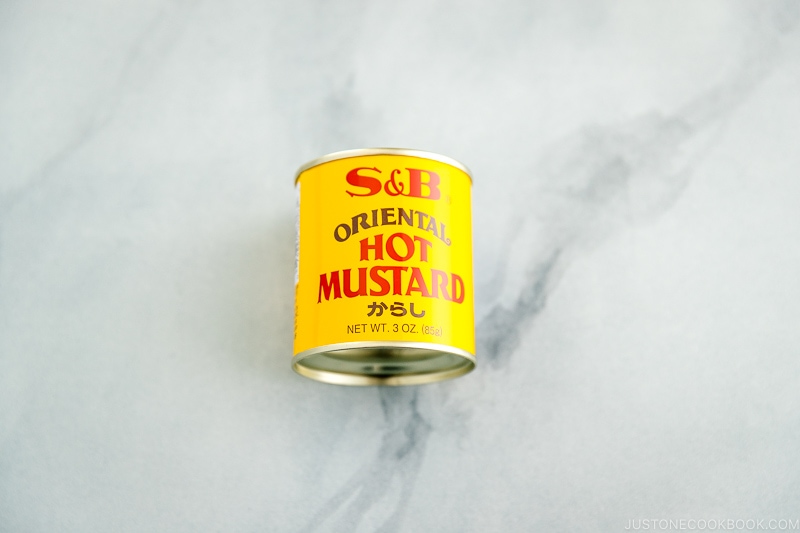
Karashi Mustard: This Japanese hot mustard is a mixture of crushed mustard seeds of Brassica juncea and horseradish. It is used as a condiment in oden, gyoza, and tonkatsu. Sold in powder form or paste form in tubes, karashi mustard is spicier and more potent than mild yellow mustard. The closest substitute would be English mustard and Chinese hot mustard powder.
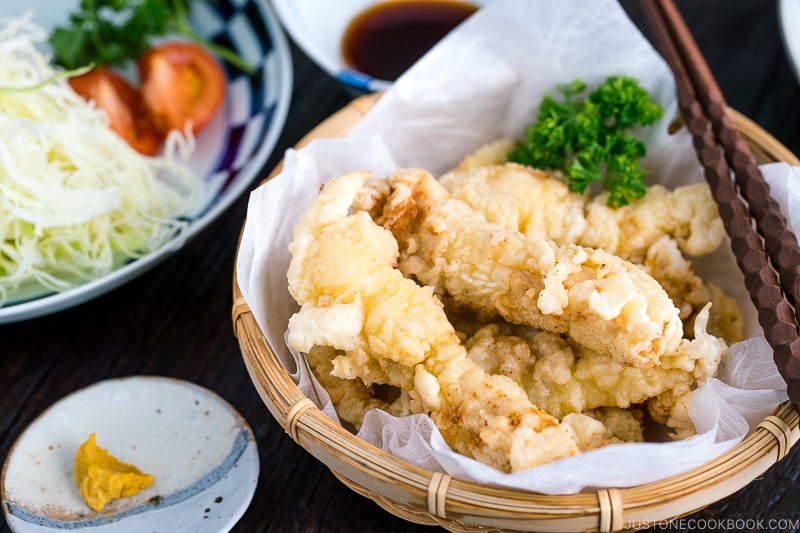
How to Store and Reheat Tempura
If you have leftovers, you can store them in an airtight container in the refrigerator for up to 2 days or in the freezer.
To reheat, place the tempura pieces on a baking sheet lined with parchment paper and bake in the ovcen at 425°F for 3-4 minutes, flip over, and bake for another 3 minutes or until hot. You could also reheat in the air fryer at 350°F, making sure there is space between each piece. Fry for 3-4 minutes on one side, turn over and fry for another 3 minutes.
The next time you have a craving for fried chicken and are about to fire up your deep fryer, give this Chicken Tempura recipe a try! Your family (or dinner guests) may be surprised to learn about chicken tempura, but they would be very happy that you bring this Oita’s specialty to the dinner table.
Your Ultimate Guide on How to Make the Best Tempura
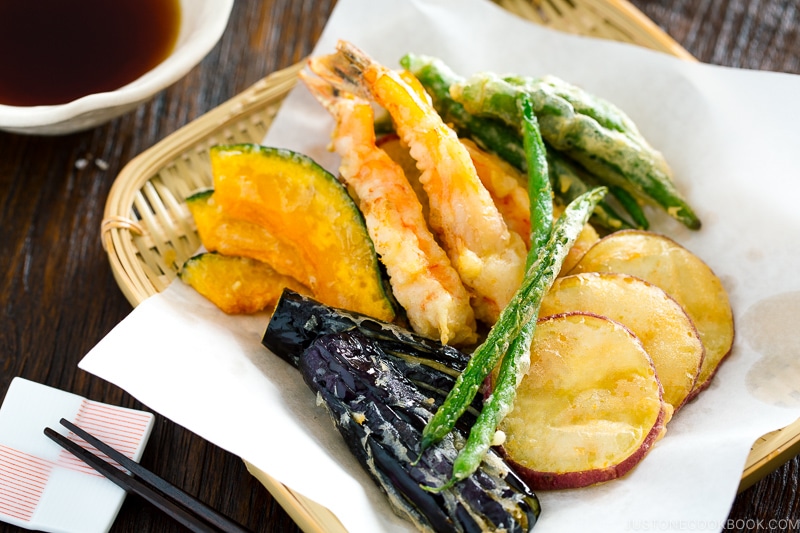
Check out this ultimate guide on How to Make the Best Tempura. You’ll find plenty of helpful tips and tricks for making the crispy batter and delicious dipping sauce.
More Popular Japanese Chicken Recipes
Wish to learn more about Japanese cooking? Sign up for our free newsletter to receive cooking tips & recipe updates! And stay in touch with me on Facebook, Pinterest, YouTube, and Instagram.

Chicken Tempura (Toriten)
Video
Ingredients
- ¾ lb boneless, skinless chicken breast
- 1 knob ginger (1 inch, 2.5 cm)
- 1 clove garlic
- freshly ground black pepper
- ¼ tsp Diamond Crystal kosher salt
- 1 tsp sake
- 2 tsp soy sauce
For the Batter
- 1 large egg (50 g each w/o shell)
- ⅓ cup cake flour (weigh your flour or use the “fluff and sprinkle“ method and level it off; you can make your own cake flour)
- ⅓ cup potato starch or cornstarch
- ⅓ cup water
For Deep-Frying
For Serving
Instructions
- Before You Start: I highly encourage you to weigh your ingredients using a kitchen scale for this recipe. Click on the “Metric“ button at the top of the recipe to convert the ingredient measurements to metric. If you‘re using a cup measurement, please follow the “fluff and sprinkle“ method: Fluff your flour with a spoon, sprinkle the flour into your measuring cup, and level it off. Otherwise, you may scoop more flour than you need.
- Now, gather all the ingredients.
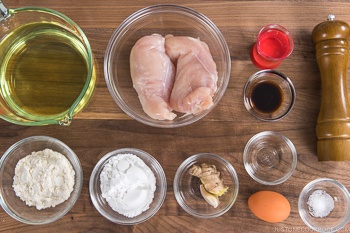
To Prepare the Chicken
- Pound ¾ lb boneless, skinless chicken breast with a meat tenderizer. If you don’t own one, you can use the back of the knife. This helps to yield a thinner and flatter piece of meat, so the meat cooks faster and more evenly (with no more overcooking!)
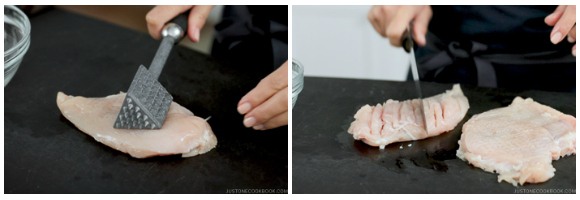
- Cut the meat into strips roughly ¾ inch (2 cm) wide and 3 inches (7.5 cm) long.
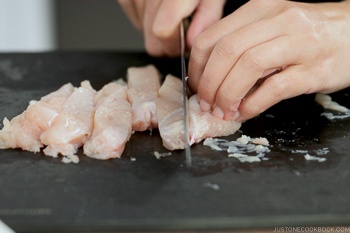
- Grate 1 knob ginger (I use a ceramic grater) and 1 clove garlic.
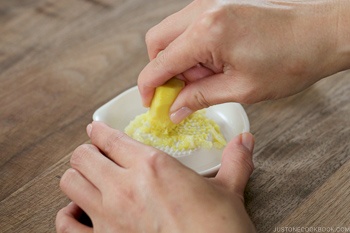
- Season the chicken with freshly ground black pepper, ¼ tsp Diamond Crystal kosher salt, 1 tsp sake, and 2 tsp soy sauce.

- Add the grated ginger and garlic and mix well with your hands to rub the chicken with the seasonings.
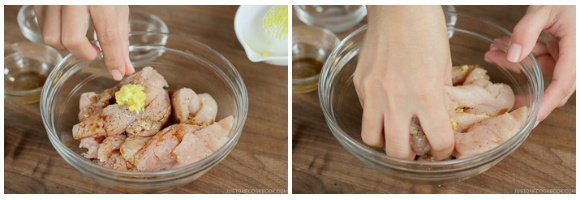
To Make the Batter
- Set a medium bowl over a large bowl with ice water in it. Add 1 large egg (50 g each w/o shell) and whisk well.

- With a fine-mesh sieve, sift ⅓ cup cake flour and ⅓ cup potato starch or cornstarch into the bowl with the egg.
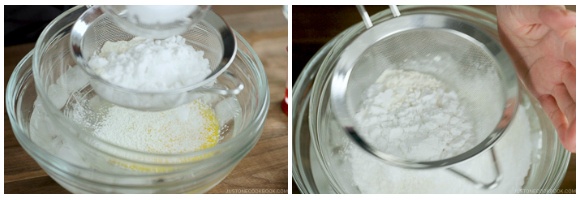
- Gradually add ⅓ cup water and mix it all together until just combined (don’t overmix).
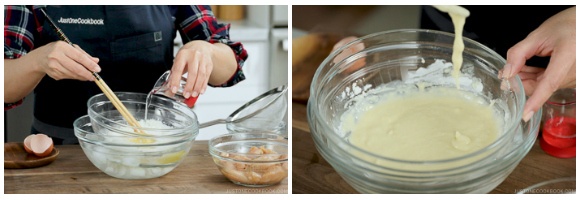
To Deep-Fry
- Add the chicken pieces and coat well with the batter.
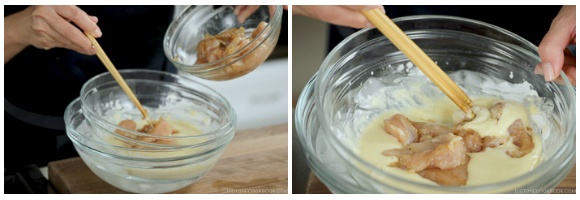
- Heat 3–4 cups (720-960 ml) neutral oil to 350ºF (180ºC) in a deep fryer (or in a medium-size pot). Add in only 2–3 pieces of battered chicken at one time. To prevent the temperature of the oil from decreasing, do not add too many cold chicken pieces at once. Deep-fry each batch until crispy on the outside, about 4 minutes total, 2 minutes each side. Then, repeat with another 2–3 pieces, until all pieces are cooked. Between batches, scoop up the tempura crumbs in the oil to keep your oil clean.

To Serve
- Serve the Chicken Tempura with shredded cabbage (I use a cabbage slicer that yields thinly shredded cabbage) and ponzu with Japanese Karashi hot mustard on the side.

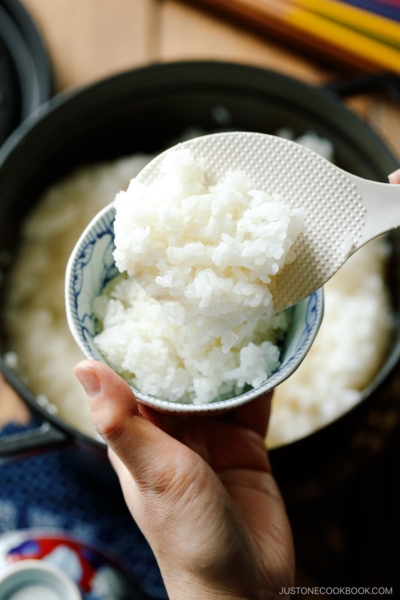
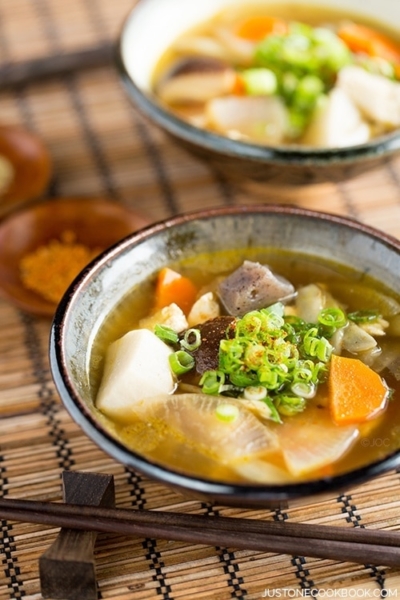
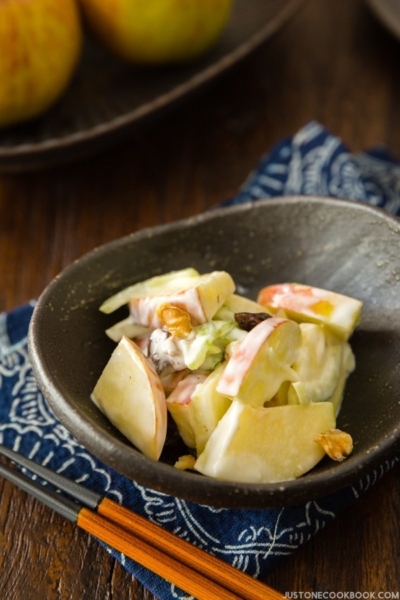
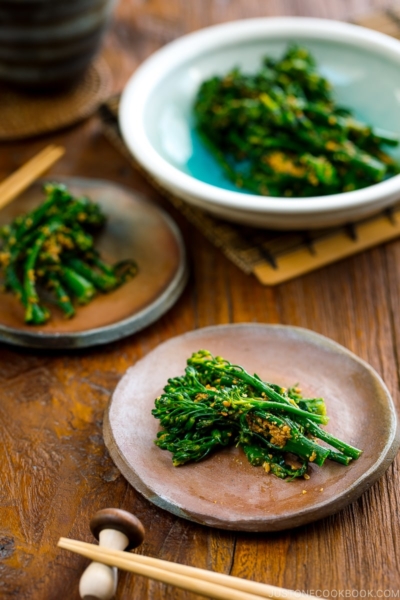




Is there a way to do tempura in an air fryer???
Hi Josh! Thank you for reading Nami’s post!
Some people coat the meat with Tempura batter, then use Tenkasu (https://www.justonecookbook.com/tenkasu-agedama/) over the batter to get the Tempura texture.
But to create the crunchy and light Tempura outer skin, we think deep-frying the Tempura is the best.
We hope this helps!
Is it ok to just use a tempura flour instead of cake flour and corn flour?
Hi Mommybeb, Sure. You can use Tempura flour instead. We hope you enjoy Chicken Tempura. 🙂
Hi, Nami.
What’s the difference between Toriten and Karaage? I still cannot figure it out.
Shuni
Hi Shuni! Toriten is chicken coated with tempura batter and deep-fried. Karaage is often marinated in soy sauce, ginger-based sauce first, and coated with just the flour (or mixture of potato starch) and deep-fried – no “batter”. Toriten is dipped in the sauce to enjoy, while karaage is enjoyed as it is (because it’s seasoned). It’s just a different way to prepare chicken. The similarity is both deep frying dish.
Thanks, Nami. But… I still don’t get it, what’s the difference between toriten and karaage.
You said, karaage is marinated in soy sauce, ginger-based sauce. Isn’t that similar to this toriten recipe written above?
You said, karaage is coated with just the flour (or mixture of potato starch). This toriten recipe also coats the chicken meat with flour and potato starch. What’s the difference?
You said karaage is deep-fried – no “batter”. However, in step 10 for this toriten recipe, you wrote: “Add the chicken pieces and coat well with the BATTER.”
You said karaage is enjoyed as it is because it’s seasoned. However, in step 5 for this toriten recipe, it’s written: “SEASON the chicken with freshly ground black pepper, ¼ tsp kosher salt, 1 tsp sake, and 2 tsp soy sauce”.
I don’t mean to argue, but I am really confuse. Even more confuse now….
Regards,
Shuni
Hi Shuni! The main difference is the batter part around the chicken. For Toriten, you dip chicken in the tempura batter (a mixture of flour and egg) and deep fry. So when you bite into the chicken, you have the thick coating around the chicken. After hours, this tempura batter coating gets soggy. Just like tempura.
For Karaage, you do not dip in the batter, the marinated (wet) chicken is dusted with flour and deep fried. When you bite, there is thin coating of flour but there is no thick coating around. After hours passed, karaage doesn’t get soggy and can still remain the same.
Here are my answers to your question:
S: You said, karaage is marinated in soy sauce, ginger-based sauce. Isn’t that similar to this toriten recipe written above?
N: Yes, but karaage seasoning is definitely stronger considering it’s enjoyed straight (although some people dip in mayo etc).
S: You said, karaage is coated with just the flour (or mixture of potato starch). This toriten recipe also coats the chicken meat with flour and potato starch. What’s the difference?
N: Toriten is coated in the batter made of flour, corn/potato starch, egg, and water. This tempura batter is the key.
S: You said karaage is deep-fried – no “batter”. However, in step 10 for this toriten recipe, you wrote: “Add the chicken pieces and coat well with the BATTER.”
N: Karaage is dusted with flour but NOT dip in the batter (like pancake / tempura batter). And yes, in step 10 of toriten recipe, you put the chicken in the batter. Maybe you got confused here? Toriten uses batter, not Karaage.
S: You said karaage is enjoyed as it is because it’s seasoned. However, in step 5 for this toriten recipe, it’s written: “SEASON the chicken with freshly ground black pepper, ¼ tsp kosher salt, 1 tsp sake, and 2 tsp soy sauce”.
N: For toriten, we dip in ponzu sauce. For karaage, you eat it by itself, except for squeeze of lemon. Some people dip in mayo, but not all restaurants/home serve with mayo.
Think this way, (chicken) tempura and (chicken) karaage are different because they look different and prepared differently. Same chicken, same deep frying, but ingredients and method are slightly different. For example, karaage does not include any egg.
Hope it’s a bit clear? 🙂
Hi, Nami.
I get it now, what you mean by “batter”. Thank you. I have never realized that before.
I still don’t get it though, for “seasoning”. Through your first reply I understand that “tempura” including “toriten” is not seasoned, unlike karaage. Am I correct?
And what I understand again is, that seasoning is a process done before frying. Am I correct?
In step 5 for this toriten recipe, it’s written: “SEASON the chicken with freshly ground black pepper, ¼ tsp kosher salt, 1 tsp sake, and 2 tsp soy sauce”.
Toriten = tempura = no seasoning?
Toriten = Recipe Step 5 = seasoning? = No seasoning?
That’s what I meant to ask.
But anyway, okaylah, the batter thing is different. I get that. Naruhodo 😊
Regards,
Shuni
Hi Shuni! Here are my answers:
S: I still don’t get it though, for “seasoning”. Through your first reply I understand that “tempura” including “toriten” is not seasoned, unlike karaage. Am I correct?
N: Typically, tempura ingredients are not pre-seasoned, sometimes salt, sake if it’s for seafood etc. Chicken is not a typical tempura ingredient, which is why it’s considered a regional food in Oita. Just like any recipes, seasoning is really optional. There is no specific rule. So if you want to add soy sauce to your seasoning, it’s okay. Skip ginger, that’s okay. That’s where you define your recipe/food. So if you want to season just salt and pepper for chicken, that’s okay too.
S: And what I understand again is, that seasoning is a process done before frying. Am I correct?
N: You season the ingredient before and during the cooking. Sometimes you add salt, sugar, soy sauce etc during the cooking, and that’s seasoning too.
S: In step 5 for this toriten recipe, it’s written: “SEASON the chicken with freshly ground black pepper, ¼ tsp kosher salt, 1 tsp sake, and 2 tsp soy sauce”.
Toriten = tempura = no seasoning?
Toriten = Recipe Step 5 = seasoning? = No seasoning?
That’s what I meant to ask.
N: When it comes to Karaage vs Toriten difference, seasoning is not a dividing factor. How it’s prepared batter vs flour is the more obvious difference. If you don’t season/marinate the chicken for karaage, that’s REALLY rare (but someone may have a special way to make Karaage). But Toriten can be seasoned with simpler salt and pepper and that’s possible.
Hope it’s clear. 🙂
nami this is EXCELLENT
Hi Linda! Thank you so much! 🙂
Finally, I find the right ingredients and almost perfect ratio to make my own tempura. I usually use common ‘fried chicken’ recipe in every time I cook this menu, the taste is quite good but the texture awaaaaaaaaaay different. Thank you again for the recipe, moreover for the tips. Keep your amazing hard work. ????
Hi Damara! Thank you for your kind feedback. xo
I just noticed a chicken tempura dish at a local Japanese restaurant and had to look it up to see if this was just some strange westernized thing, or something people actually do in Japan, because I’ve never heard of it being done before. I’m actually a bit surprised it is a food that is largely limited to Oita because chicken itself seems to be quite popular and lends itself well to breading and deep frying. Then again, as most Japanese restaurants around here have no real connection to Japan, it is quite possible they have no idea that this is a regional speciality and decided to do it because they feel it will go over well with the people’s palettes here.
Hi Travis! Your theory is interesting and could be true, especially if the chicken tempura was NOT served with ponzu. If it was regular tempura dipping sauce… maybe they just use chicken because it’s a common meat option here. 😀
Yeah it’s interesting that chicken tempura stay a regional food in Japan. I had never eaten chicken tempura whole my life in Japan (I came to the US when I was 20). I still don’t see chicken tempura in Tokyo area when I go out to eat. Japan has so many regional foods. Like a lot of foods in Nagoya are very unique and we don’t really get to eat that in Tokyo (or other parts of Japan). 🙂
I can’t use sake and mirin as it contain alcohol.
I never taste them, so I can’t imagine what they taste like.
What can you suggest for their substitute?
Hi Ira! I just published a new post about sake and mirin. Could you read the post and let me know if you have any questions? 🙂
https://www.justonecookbook.com/sake-mirin/
Hi Nami, thank you so much for your recipes which enable me and my family to cook, enjoy and appreciate the Japanese cuisine. However, all along I have tried to avoid oil frying at home, not because I do not like frying food but because I don’t know how to deal with the oil afterwards. What do you usually do about it, or do you any suggestions if I don’t want to dumb it after just using for once.
Hi Cindy! Thank you so much for reading my blog and trying out my recipes. Here are two of my suggestions.
https://www.justonecookbook.com/how_to/how-to-deep-fry-food/
Let me know if you have more questions. 🙂
Hi Nami, can I use soda water or beer instead of water? Some recipe suggest cold sparkling water or beer for the batter liquid.
Hi Yuni! Sure, it’s more western technique, but it makes the batter crispy and airy. Enjoy the recipe! 🙂